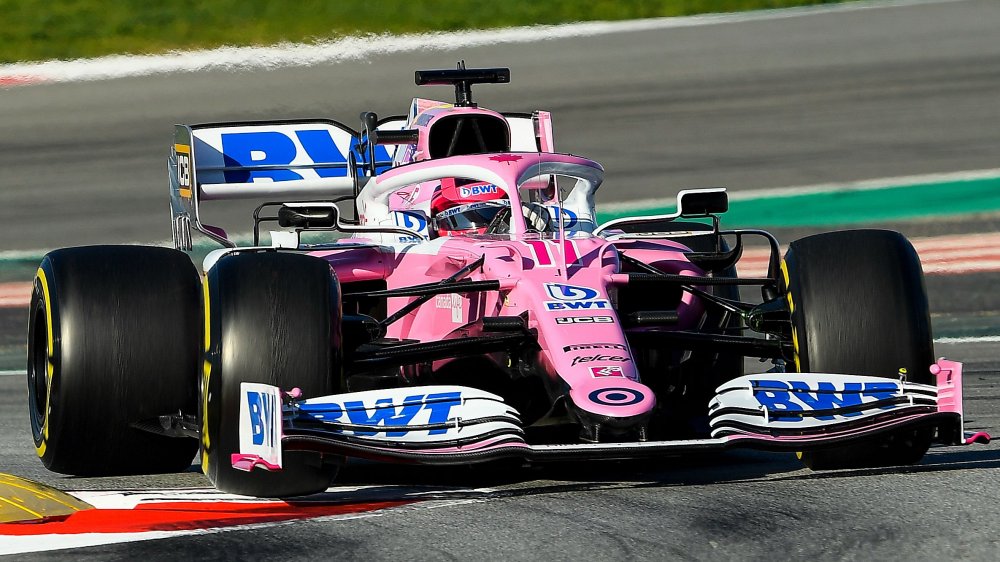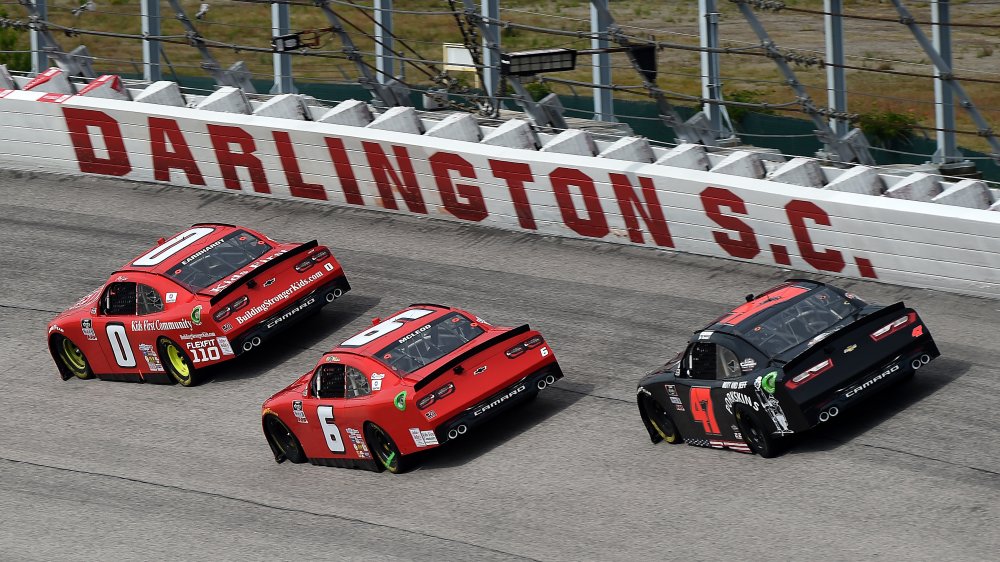The Real Reason Race Cars Don't Have Airbags
There are lots of ways to race cars. Some are more legal (and perhaps safer) than others. For instance, there's the obviously illegal Cannonball Run. Yes, a fairly goofy pair of Burt Reynolds movies, but like a lot of comedy, rooted in truth. The race takes place from the Red Ball Garage in New York to the Portofino Hotel and Marina in Redondo Beach, California. It was run yet again in April 2020, and a new record for the course — 26 hours, 38 minutes — was set. According to Road and Track, the record might have been helped along by the fact that with shelter-in-place in effect, there was a lot less traffic to consider.
On the other hand, NASCAR (National Association for Stock Car Racing) sees its own traffic problems as drivers navigate the track at speeds sometimes surpassing 200 miles per hour, according to Business Insider. And tailgating while they do it. On the other other hand, we have Formula One (sometimes 1) racing, which also involves very high speeds in the 200+ miles per hour range. While NASCAR vehicles are basically cars, Formula 1 are stripped down, engineered speed machines. In both kinds of competition, accidents do indeed happen, and every so often, tragically, a driver will die as a result.
Speed, yes, but also safety
Both sports have safety precautions in place — remarkable feats of ingenuity and engineering, reducing, if not eliminating, some of the hazards inherent in steering a machine at great speed among other machines equally speedy, if not more so. But among those precautions, you would look far and wide for a common airbag. And would find one neither at NASCAR nor Formula 1.
The quick and easy answer is, they don't need them. As Wonderful Engineering explains, an airbag — required in U.S. automobiles as of September 1, 1998, says Autojumble — isn't necessary, because most of its functions are performed by other pieces of equipment. Perhaps first and foremost is the HANS — the Head and Neck Support, worn on the shoulders and supporting the helmet, thereby stabilizing the driver's head and keeping it from smacking into something like the steering wheel. The driver's seating area is a "survival shell," a rigid enclosure within the machine to protect the driver in case of calamity.
Similarly, NASCAR vehicles have roll cages built into the car's structure. How Stuff Works tells us that the drivers also utilize high-tech helmets and HANS gear. It's also argued that an airbag has the potential to actually slow down and hamper a driver's reaction time when fractions of a second count. Like Formula 1, NASCAR drives use more than a simple three-point seat belt; they have five-point restraint systems to stabilize the driver in the unfortunate event of an impact.

